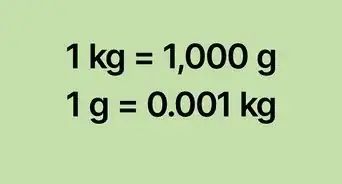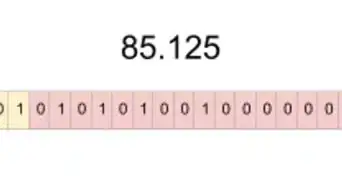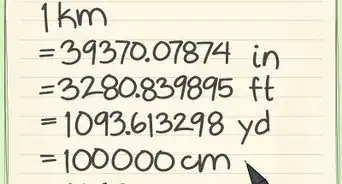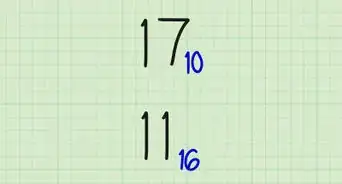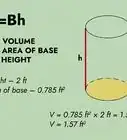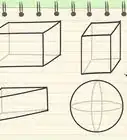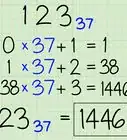This article was co-authored by Grace Imson, MA. Grace Imson is a math teacher with over 40 years of teaching experience. Grace is currently a math instructor at the City College of San Francisco and was previously in the Math Department at Saint Louis University. She has taught math at the elementary, middle, high school, and college levels. She has an MA in Education, specializing in Administration and Supervision from Saint Louis University.
There are 8 references cited in this article, which can be found at the bottom of the page.
This article has been viewed 805,909 times.
A cubic inch is a measure of volume that is equal to that of a cube measuring 1 inch (2.5 cm) on each side. An object's volume in cubic inches is, thus, the same as that of a certain number of these hypothetical cubes. There are a number of ways to calculate an object's volume in cubic inches, but in the simplest cases, as with 3-dimensional rectangular prisms (boxes), the volume is simply length × width × depth when all measurements are in inches.[1]
Steps
Cubic Inches Calculator
Calculating the Volume of a Box in Cubic Inches
-
1Measure the length, width, and depth of an object in inches. To calculate the volume of a rectangular space, all you need to know are the values of its dimensions in inches. You may need to physically measure the object or to convert to inches from a different set of units.[2]
- To calculate the volume, you need to use the same unit (inches in our case) for all dimensions, otherwise you won't get the correct result.
- For example, if we wanted to find the volume of a refrigerator, we would find its length, width, and depth in inches. Let's say our fridge is 50 inches (127.0 cm) long, 25 inches (63.5 cm) wide, and 20 inches (50.8 cm) deep.
-
2Write the length of your object. The first step in calculating a volume with this process is to write one of your dimensions down. You can multiply these dimensions in any order - for our purposes, let's write the length first.
- In our example, we would write 50 first, as our fridge is 50 inches (127.0 cm) long.
Advertisement -
3Multiply the length by the width of your object. Next, multiply your first dimension by one of the others. Again, you can multiply your dimensions in any order, but, for our purposes, let's multiply the length by the width.[3]
- In our example, we would multiply 50 × 25 - the width. 50 × 25 = 1250.
-
4Multiply your answer by the depth of your object. Finally, multiply the answer you got by multiplying two of your object's dimensions by the remaining dimension. In our case, this means multiplying the product of our object's length and width by its depth.
- In our example, we would multiply 1250 × 20 - the depth. 1250 × 20 = 25,000.
-
5Label your answer in cubic inches. You may know that your final answer refers to a volume in cubic inches, but another person may not. Be sure to use a proper label for your answer that specifies that the volume is in cubic inches.
- Acceptable labels include:
- "Cubic Inches"
- "Inches Cubed"
- "Cu. In."
- "In3"
- Acceptable labels include:
Calculating the Volumes of Other Shapes
-
1Calculate the volume of a cube with L3. Cubes are rectangular prisms (boxes) in which every side length and angle is equal.[4] Thus, the volume of a cube can be written as length × width × depth = length × length × length = length3. To get your answer in cubic inches, ensure your length measurement is in inches.[5]
-
2Calculate the volume of a cylinder with v = hπr2. Cylinders are smooth-sided objects with two circular faces of equal size. The formula v = hπr2 where v = volume, h = height, and r = the cylinder's radius (the distance from the center of either of the circular faces to its edge) gives the volume of a cylinder.[6] Make sure your measurements for h and r are in inches.
-
3Calculate the volume of a cone with v = (1/3)hπr2. Cones are smooth-sided objects with a circular base that tapers to a point. The formula v = hπr2/3 where v = volume, h = height, and r = the radius of the circular base gives the volume of a cone.[7] As above, ensure your measurements for h and r are in inches.[8]
-
4Calculate the volume of a sphere with v = 4/3πr3. Spheres are perfectly round 3-d objects. The equation v = 4/3πr3 where v = volume and r = the radius of the sphere (the distance from its center to its edge) gives the volume of a sphere.[9] As before, make sure your measurement for r is in inches.
Community Q&A
-
QuestionWhat would 200 cubic inches equal in a box: Length, width and depth?
 Community AnswerThe length x width x depth = the total cubic inches. Unless the object you are working with is a perfect cube (all sides are equal,) there is no way to tell with the length, width and depth are. If you are working with a perfect cube just take the square root of 200, then the square root of that (taking 2 square roots will undo the cube and give you the measurements.) In this case, each side will be just under 6 inches (6x6x6), more accurately 5.84 inches.
Community AnswerThe length x width x depth = the total cubic inches. Unless the object you are working with is a perfect cube (all sides are equal,) there is no way to tell with the length, width and depth are. If you are working with a perfect cube just take the square root of 200, then the square root of that (taking 2 square roots will undo the cube and give you the measurements.) In this case, each side will be just under 6 inches (6x6x6), more accurately 5.84 inches. -
QuestionHow do I write km in volume?
 DonaganTop AnswererYou could express a volume in cubic kilometers (km³).
DonaganTop AnswererYou could express a volume in cubic kilometers (km³). -
QuestionHow do I convert square inches into cubic inches?
 DonaganTop AnswererIf you have one side of a volume that's measured in square inches, you could multiply by a third dimension in inches to arrive at a volume in cubic inches.
DonaganTop AnswererIf you have one side of a volume that's measured in square inches, you could multiply by a third dimension in inches to arrive at a volume in cubic inches.
References
- ↑ https://www.omnicalculator.com/conversion/cubic-feet
- ↑ https://www.mathsisfun.com/cuboid.html
- ↑ https://www.mathsisfun.com/cuboid.html
- ↑ https://www.mathsisfun.com/geometry/cuboids-rectangular-prisms.html
- ↑ https://sciencing.com/convert-inches-cubic-feet-4530253.html
- ↑ https://www.mathsisfun.com/geometry/cylinder.html#Volume
- ↑ https://www.mathsisfun.com/geometry/cone.html
- ↑ https://sciencing.com/calculate-volume-rectangular-prism-2040920.html
- ↑ https://www.mathsisfun.com/geometry/sphere.html
About This Article
To calculate cubic inches, start by measuring the length, width, and depth of the box you're measuring in inches. Then, multiply the length by the width. Finally, multiply the product of the length and the width by the depth of the box to find the volume in cubic inches. If you want to find the volume of a cylinder in cubic inches, use the formula v = hπr^2, where h is the height of the cylinder and r is the radius of the base. If you want to learn how to calculate the volume of other shapes in cubic inches, keep reading!

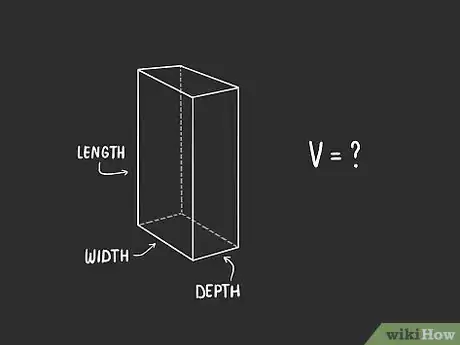
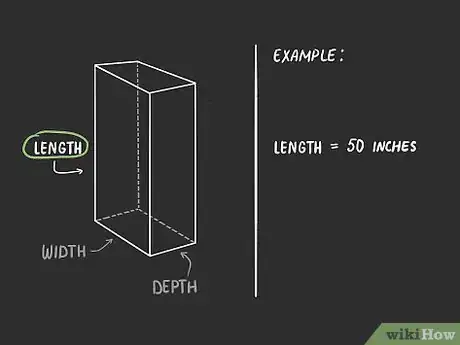
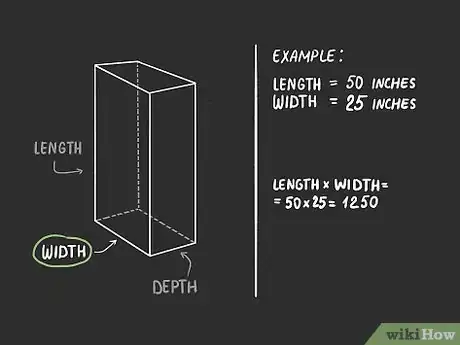
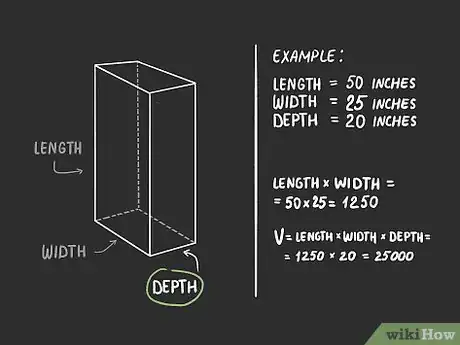
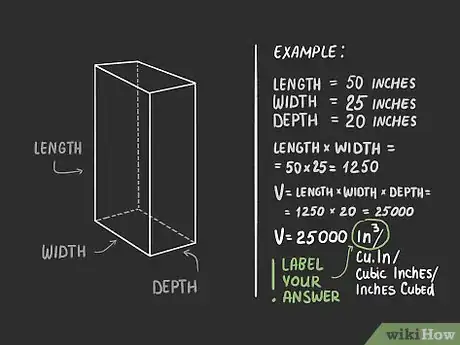
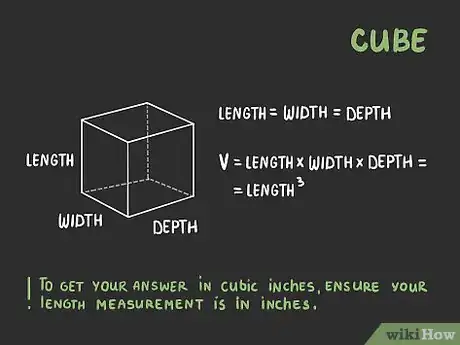

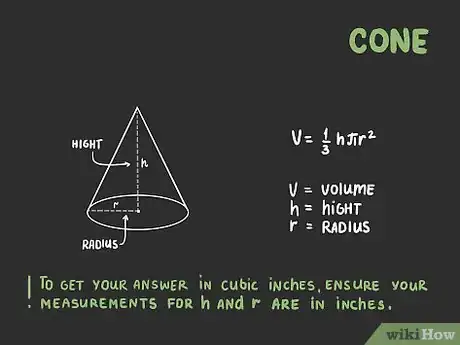
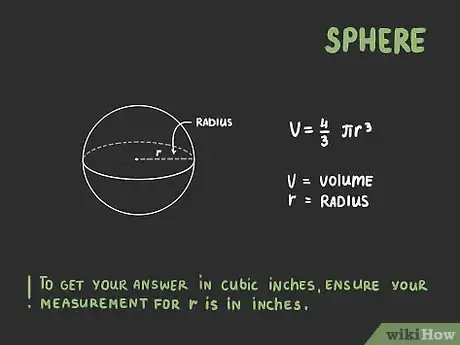




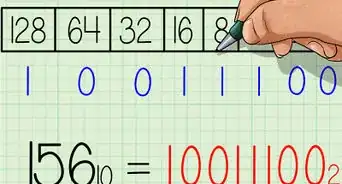
-to-Grams-(g)-Step-8-Version-5.webp)
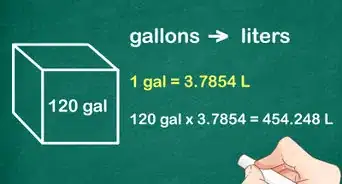

-to-Fahrenheit-(°F)-Step-6-Version-2.webp)
